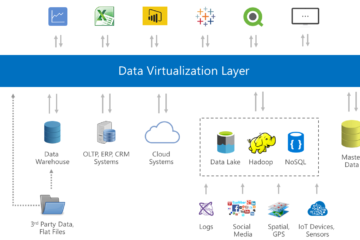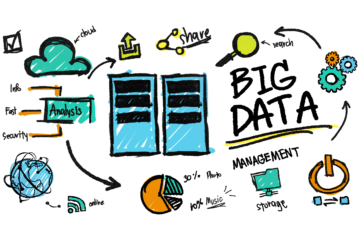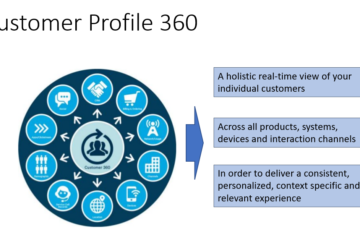Exploring Different RDBMS
Introduction:
Relational Database Management Systems (RDBMS) are the backbone of modern data storage and management. They provide robust features for storing, organizing, and retrieving data in a structured manner. This article aims to introduce and describe various RDBMS options available in the market, highlighting their unique characteristics, pros and cons, and industrial use-cases.

1. Oracle Enterprise Database:
Oracle Enterprise Database is one of the most popular and widely used RDBMS in the industry. It offers a comprehensive set of features, scalability, and high performance. It caters to large enterprises and mission-critical applications that require reliability, security, and advanced analytics capabilities.
Pros:
– Excellent performance and scalability.
– Advanced security features.
– Rich set of data management and analysis tools.
– Extensive support for high availability and disaster recovery.
– Strong community and vendor support.
Cons:
– Expensive licensing costs.
– Steeper learning curve.
– Proprietary nature may limit customization options.
– Resource-intensive requirements.
Industrial Use-case: Oracle Enterprise Database is commonly used in industries such as finance, e-commerce, healthcare, and large-scale enterprises that require robust and scalable database solutions for complex applications.
2. IBM DB2 Enterprise:
IBM DB2 Enterprise is an enterprise-grade RDBMS known for its reliability, scalability, and advanced features. It offers high-performance data management capabilities and supports various operating systems, making it suitable for diverse environments.
Pros:
– Robust and scalable architecture.
– Excellent support for large-scale deployments.
– Advanced data compression and storage optimization.
– Strong data security features.
– Seamless integration with IBM’s ecosystem.
Cons:
– Higher licensing costs for enterprise features.
– Requires expertise for optimal configuration and management.
– Limited third-party tool support compared to other RDBMS.
– Complex setup and administration processes.
Industrial Use-case: IBM DB2 Enterprise is commonly used in industries such as finance, telecommunications, and large enterprises that require a reliable and scalable RDBMS for data-intensive applications.
3. Microsoft SQL Server:
Microsoft SQL Server is a widely used RDBMS that offers a comprehensive suite of features for data management, business intelligence, and application development. It is known for its user-friendly interface, strong integration with Microsoft’s ecosystem, and wide adoption among businesses.
Pros:
– Easy to use with a familiar interface.
– Integration with Microsoft products and services.
– Strong support for business intelligence and reporting.
– Excellent developer tools and application integration capabilities.
– Flexible deployment options (on-premises and cloud).
Cons:
– Higher licensing costs for enterprise editions.
– Limited support for non-Windows platforms.
– Performance may vary depending on workload and configuration.
– Some advanced features require additional licensing.
Industrial Use-case: Microsoft SQL Server is commonly used in industries such as finance, retail, and manufacturing, where integration with Microsoft technologies, ease of use, and business intelligence capabilities are critical.
4. MySQL:
MySQL is a popular open-source RDBMS known for its simplicity, speed, and ease of use. It is widely adopted by small to medium-sized businesses, web applications, and startups due to its low cost, high performance, and extensive community support.
Pros:
– Open-source and freely available.
– High performance and scalability.
– Easy to set up and manage.
– Wide range of third-party tool support.
– Strong community support and active development.
Cons:
– Limited advanced features compared to enterprise-grade RDBMS.
– Some performance limitations for complex queries and large datasets.
– Limited support for certain data types and indexing options.
– Limited support for distributed architectures.
Industrial Use-case: MySQL is commonly used in industries such as e-commerce, web applications, and startups that require a cost-effective and easy-to-use RDBMS for managing relational data.
5. EnterpriseDB:
EnterpriseDB (EDB)
is an enterprise-ready RDBMS built on PostgreSQL, an open-source database management system. EDB offers additional enterprise features, support, and compatibility with Oracle, making it an attractive option for organizations looking to migrate from Oracle.
Pros:
– Compatibility with Oracle databases and applications.
– Extensive support for Oracle PL/SQL and SQL dialects.
– High performance and scalability.
– Rich feature set of PostgreSQL.
– Lower licensing costs compared to Oracle.
Cons:
– Some advanced features require additional licensing.
– Limited third-party tool support compared to Oracle.
– Potential learning curve for Oracle developers migrating to EDB.
Industrial Use-case: EnterpriseDB is commonly used in industries where Oracle compatibility, cost savings, and high-performance PostgreSQL features are important, such as finance, healthcare, and government sectors.
6. MariaDB:
MariaDB is an open-source RDBMS that emerged as a community-driven fork of MySQL. It aims to be a drop-in replacement for MySQL with added features, performance improvements, and enhanced security.
Pros:
– Open-source and freely available.
– High compatibility with MySQL.
– Improved performance and scalability compared to MySQL.
– Active community support and regular updates.
– Transparent and open development process.
Cons:
– Limited enterprise-level support options.
– Smaller ecosystem compared to MySQL.
– Potential compatibility issues with certain MySQL-specific features.
– Limited support for advanced security features.
Industrial Use-case: MariaDB is commonly used in various industries, including web applications, content management systems, and environments where open-source solutions, compatibility with MySQL, and performance improvements are valued.
7. PostgreSQL:
PostgreSQL, often referred to as Postgres, is a feature-rich and highly extensible open-source RDBMS. It offers strong data integrity, ACID compliance, and advanced features for complex data management scenarios.
Pros:
– Open-source and freely available.
– High data integrity and reliability.
– Advanced features such as JSON support, full-text search, and geospatial data.
– Excellent support for complex queries and transactions.
– Active community support and regular updates.
Cons:
– May require more system resources compared to other RDBMS.
– Some performance limitations for certain workloads.
– Smaller user base compared to commercial RDBMS.
– Learning curve for beginners and non-technical users.
Industrial Use-case: PostgreSQL is commonly used in industries such as finance, GIS (geographic information systems), scientific research, and data analytics, where advanced features, extensibility, and data integrity are critical.
8. Sybase ASE:
Sybase Adaptive Server Enterprise (ASE) is an enterprise-grade RDBMS known for its high performance, scalability, and data management capabilities. It offers robust transactional processing and supports large-scale deployments.
Pros:
– Excellent performance and scalability.
– High availability and disaster recovery options.
– Strong support for transaction processing.
– Advanced data management and optimization features.
– Wide range of development tools and APIs.
Cons:
– Limited community support compared to other RDBMS.
– Higher licensing costs for enterprise features.
– Learning curve for administrators and developers.
– Limited support for non-Windows platforms.
Industrial Use-case: Sybase ASE is commonly used in industries such as finance, telecommunications, and large enterprises that require high-performance transaction processing, scalability, and data management capabilities.
9. SAP HANA:
SAP HANA is an in-memory RDBMS designed for real-time data processing and analytics. It offers high-speed data processing, advanced analytics, and integration with SAP’s ecosystem, making it suitable for businesses relying on SAP applications.
Pros:
– In-memory processing for high-speed analytics.
– Advanced analytics capabilities and predictive modeling.
– Real-time data replication and integration.
– Seamless integration with SAP applications.
– Scalability and high availability options.
Cons:
– Higher licensing costs compared to traditional RDBMS
– Hardware requirements for in-memory processing.
– Limited compatibility with non-SAP applications.
– Specialized knowledge required for administration and development.
Industrial Use-case: SAP HANA is commonly used in industries such as finance, retail, and manufacturing, where real-time analytics, integration with SAP applications, and high-speed data processing are essential.
10. IBM Informix:
IBM Informix is a highly scalable and reliable RDBMS that offers strong performance and minimal administration requirements. It is designed for handling high-volume workloads and supports a wide range of application environments.
Pros:
– Excellent performance and scalability.
– Minimal administrative overhead.
– Automatic data replication and high availability options.
– Flexible licensing options.
– Extensive support for embedded and IoT applications.
Cons:
– Limited community and third-party tool support.
– Higher licensing costs for enterprise features.
– Steeper learning curve for beginners.
– Limited support for non-IBM platforms.
Industrial Use-case: IBM Informix is commonly used in industries such as finance, telecommunications, and IoT applications that require high scalability, reliability, and minimal administrative overhead.
11. SQLite:
SQLite is a lightweight and embedded RDBMS that is widely used for mobile applications, embedded systems, and small-scale projects. It offers simplicity, portability, and zero-configuration deployment.
Pros:
– Lightweight and embedded nature.
– Zero-configuration and serverless architecture.
– Cross-platform compatibility.
– High-performance and low resource requirements.
– Public domain license.
Cons:
– Limited scalability for large-scale deployments.
– Not suitable for high-concurrency or heavy-write workloads.
– Limited support for advanced features compared to full-fledged RDBMS.
– Limited user access controls and security options.
Industrial Use-case: SQLite is commonly used in industries such as mobile application development, embedded systems, and small-scale projects that require a lightweight, portable, and serverless RDBMS solution.
Conclusion:
In this article, we have explored various RDBMS options, highlighting their pros and cons, and industrial use-cases. Each RDBMS has its own strengths and weaknesses, catering to specific requirements and preferences. It is important to evaluate your organization’s needs, scalability requirements, budget, and desired feature set when choosing the right RDBMS for your projects.


